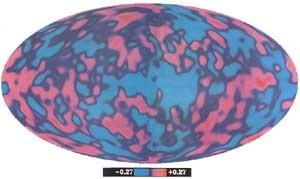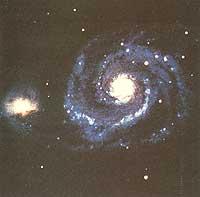Text written in Basque and translated automatically by Elia without any subsequent editing. SEE ORIGINAL
Big Bang hollows
1995/01/01 Elhuyar Zientzia Iturria: Elhuyar aldizkaria

Hubble's constant directly affects the expansion speed of the Universe and the model of the Universe indirectly.
In the issue of the journal Nature, on November 3, in the section “Limits to Ignorance”, it is explained with mastery where we are and what we know. These limits include those of the Big Bang.
- Lost mass. The problem is that, if it is assumed that the density of the Universe is equal to that of critical density,\\\\\\\\\\{\\}\{\\{\{\\\\\\{\}\}="???ã\ ?? -{\>} = 1. If this assumption is accepted, the lost mass is very large. The mass corresponding to the galaxies seen is that corresponding to 1% of the critical density. There can be a mass that is not seen (expired stars, stars too small to shine, etc. ). However, we are still far from having\ =1. Where is the remaining mass? Two main options are considered: in the original gas that has not yet formed galaxies and neutrino and similar particles. The debate is still at stake.
- Hubble constant. The Hubble constant directly affects the propagation speed of the Universe and indirectly the model of the Universe (whether it expands definitively or begins to contract at some time). The value currently allowed is 0.87 ± 0.07 (too high for the cosmologist to relax).
- Age of the universe. In this problem W and Hubble are dancing the constant (h). In fact, if the value of h is the above mentioned, the value of\ must be very inferior to 1 so that the age of the Universe is not inferior to that of some globular clusters known today.
- Light isotopes. The mechanism of formation of light isotopes is not yet very clear.
- Influence. The inflation phase of the Big Bang continues to cause great headaches in the thread of what we now know about particle physics.
- Quantum gravitation. The study of the pre-inflation phase of the Universe requires encoding the field of gravity and only the way has begun.
- Cuasares. When in the 1960s the quasars (punctual sources of great energy) were discovered, a great doubt was raised: Are the quasars one of the development phases of some galaxies or are they one of the development phases of most stars? In this case, moreover, what does it mean?

eu es fr en ca gl
Gai honi buruzko eduki gehiago
Elhuyarrek garatutako teknologia





